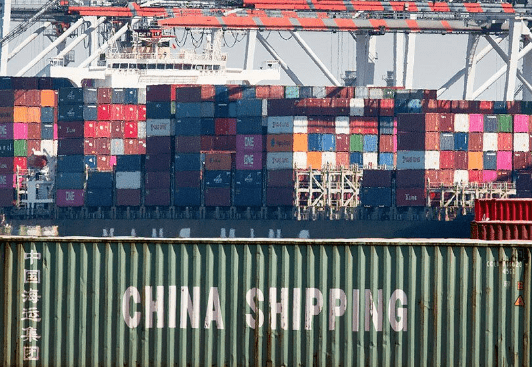China’s exports continued to surge in May, although at a slower pace than the previous month, fueled by strong global demand as more economies around the world opened up, according to a report by Bloomberg.
Imports soared, boosted by rising commodity prices. Exports grew almost 28% in dollar terms in May from a year earlier, the customs administration said Monday, weaker than forecast and below the pace in April, but still well above historical growth rates. Imports soared 51.1%, the fastest pace since March 2010, leaving a trade surplus of $45.5 billion for the month.
According to the report, overseas demand for Chinese goods remained strong as economies from the U.K. to the U.S.emerged from months of lockdown. Exports to emerging markets like India and in Southeast Asia, which have seen a resurgence in Covid-19 outbreaks, also climbed. South Korea’s exports, a bellwether for world trade, surged the most since 1988 in May, a sign that the global recovery is strengthening.
“It’s still a fairly healthy set of numbers,” Jonathan Cavenagh, senior market strategist at Informa Global Markets, said in an interview on Bloomberg TV. “We know that global demand is still recovering and that trend is likely to continue towards the end of the second quarter and into the third quarter as the major developed economies open up.”
Exports to the U.S. moderated, although still grew at a healthy pace of about 21% growth, while shipments to the European Union slowed to an almost 13% expansion. Purchases by Indian companies jumped more than 100% for the second straight month.
There was also a shift in categories driving export growth. Sales of household appliances and lighting grew, while there was a more than 41% drop of textile and fabric goods, which includes masks and protective clothing. These changes “seem to be consistent with our view that strengthening exports of non-Covid related products offset weakening exports of Covid-related products as global vaccination proceeds,” Goldman Sachs Group economists wrote in a note.
The downside surprise in China’s May exports — following weaker new export orders — suggests external demand is starting to moderate. To be sure, the pace of gains was still robust, providing further support for the production-led recovery. But it may not be quite so strong beyond the second quarter. -Eric Zhu, China economist
China’s exports will keep up their good momentum in the first half of the year, Gao Feng, a spokesman for the Ministry of Commerce, said last week.
Higher commodity prices and last year’s low base continued to drive up imports. The economy’s strong recovery from the pandemic has fueled demand for commodities, also helping to boost their prices. Imports of iron ore and concentrate were up 85.5% by value in the first five months of the year, but only 6% by volume. Copper ore and concentrate imports were up 54.5% by value, but only 6.4% by volume.
Those record prices are pushing up costs for businesses. The government has recently ratcheted up its campaign to tame prices and curb inflation pressures.
The data may have been distorted by fewer working days in May due to the five-day Labor Day holiday. There were also disruptions at one of China’s busiest ports from late May due to a Covid-19 outbreak, which could have impacted the data.
“Exports surprised a bit on the downside, maybe due to the Covid cases in Guangdong province which slowed down the turnover in Shenzhen and Guangzhou ports,” said Zhang Zhiwei, chief economist at Pinpoint Asset Management. “The risk of supply chain disruption is rising” and export prices and shipping costs will likely rise further as Guangdong plays a critical role in the global supply chain, he wrote.
Chinese factory gate prices likely rose 8.5% in May from a year earlier, according to the median estimate ahead of data due Wednesday. That would be the fastest rise since 2008, and would also have helped push up export costs.
